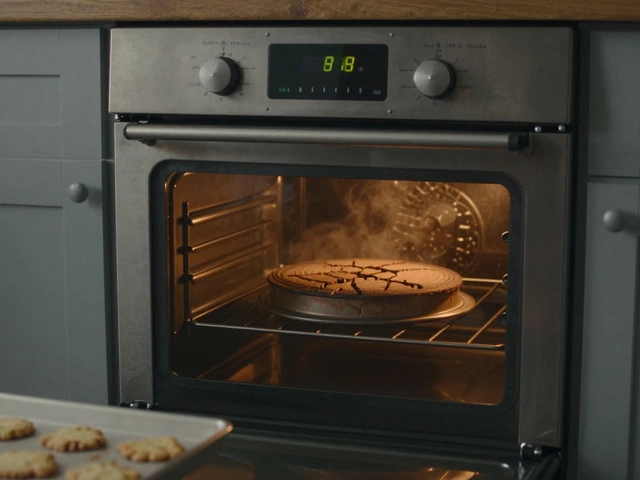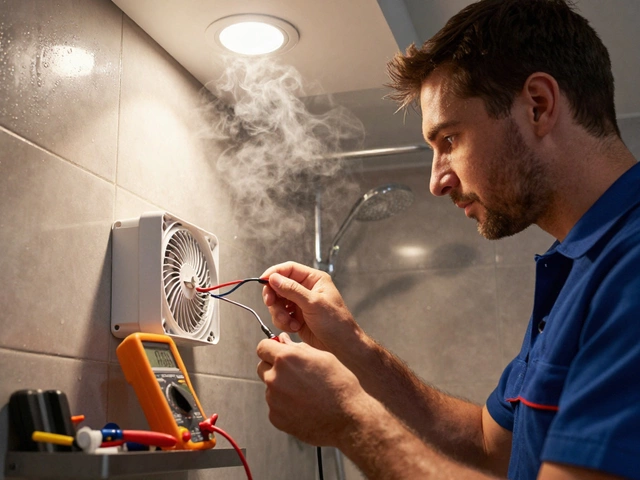Home Ventilation Basics: Tips for Fresh Kitchen and Bathroom Air
Stale air, lingering smells, and damp walls are all signs your home ventilation could use a boost. Good airflow isn’t just about comfort—it prevents mold, keeps appliances running smooth, and makes breathing easier. Let’s go through the must‑know basics so you can feel the difference right away.
Why an Extractor Fan Is Your Best Friend
Extractor fans pull moist or odorous air out of the room and push it outside. In a kitchen, they whisk away steam from boiling water and grease from frying pans. In a bathroom, they whisk away humidity that can turn tiles soggy and encourage mold growth. The result? A drier, cleaner space that lasts longer.
If your fan hums loudly, spins slower than before, or doesn’t turn on at all, it probably needs a quick clean‑up. Dust and grease can clog the blades and the vent cover. Turn off the power, remove the cover, and wipe away the grime with a damp cloth. A little maintenance can add years to the fan’s life and keep the airflow strong.
Choosing the Right Fan for Each Room
Not all fans are created equal. Kitchen fans usually need higher CFM (cubic feet per minute) because they handle more steam and smoke. Look for a model rated for at least 100 CFM per square foot of cooking surface. Bathroom fans can be smaller but should have a timer or humidity sensor to turn off automatically once moisture drops.
When you shop, check the noise rating (measured in sones). A fan under 2.0 sones is whisper‑quiet, perfect for a bedroom‑adjacent bathroom. Also, make sure the unit fits the existing duct size—most homes use a 4‑inch duct, but larger ducts can handle more air.
Installation is another piece of the puzzle. If you’re comfortable with basic electrical work, you can replace a fan yourself by turning off the circuit breaker, disconnecting the old wiring, and matching the wires on the new unit. Always follow the manufacturer’s wiring diagram and secure the fan firmly to the wall or ceiling.
For homes without existing ductwork, you might need a “through‑the‑wall” fan that vents directly outside. These are a bit louder but still work well if you seal around the opening properly.
Beyond fans, consider natural ventilation. Opening windows cross‑wise creates a gentle breeze that pushes stale air out and fresh air in. Even a small kitchen window opened while cooking can cut humidity by half.
Finally, keep an eye on the ducts themselves. Over time, they can collect dust, spider webs, or even small nests. A quick vacuum with a brush attachment every few months keeps the path clear and ensures the fan can push air efficiently.
By staying on top of fan cleaning, picking the right model for each room, and using a mix of mechanical and natural airflow, you’ll notice drier walls, fewer smells, and a home that feels healthier. Got a specific ventilation problem? Drop a comment and we’ll help you troubleshoot it step by step.
27 March 2025
·
0 Comments
Extractor fans play a crucial role in maintaining air quality in kitchens and bathrooms. While some might consider replacing an extractor fan themselves, it's essential to weigh the complexity and safety concerns. Understanding the electrical skills needed, as well as when professional help is necessary, can save time and prevent potential mishaps. Whether it's dealing with wiring or ensuring proper ventilation, knowing when to call an expert could be a wise choice.
Read more
26 January 2025
·
0 Comments
This article explores the ins and outs of repairing a bathroom extractor fan. From understanding common issues and troubleshooting steps to deciding when to DIY or call a professional, you'll gain practical knowledge. It also offers tips on maintaining your fan for longevity and efficiency. Perfect for homeowners looking to improve home ventilation and tackle basic repairs.
Read more







